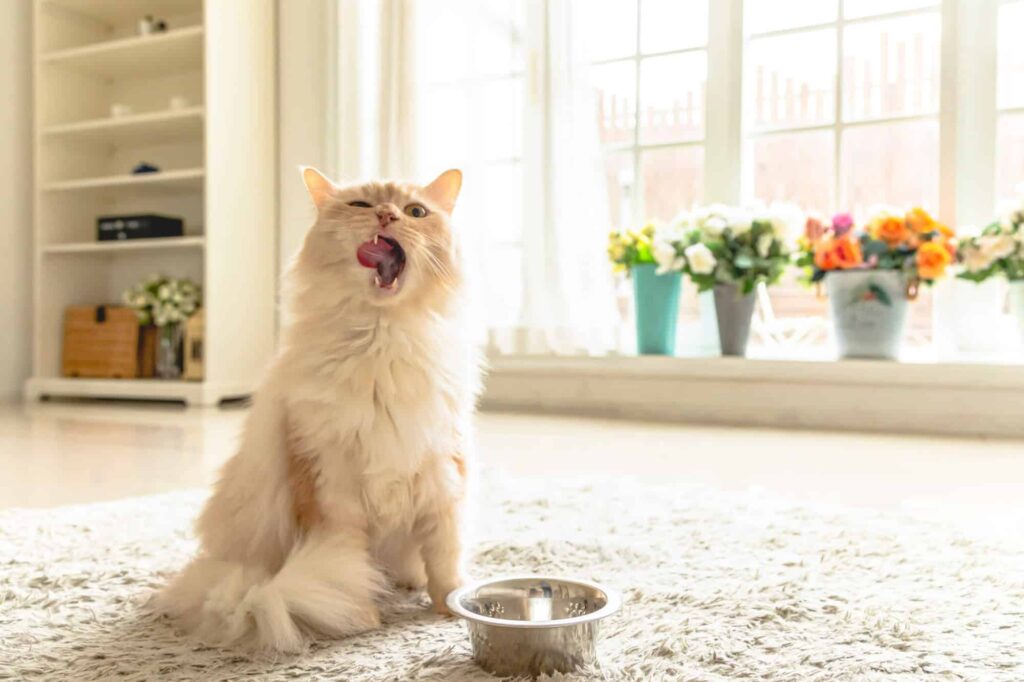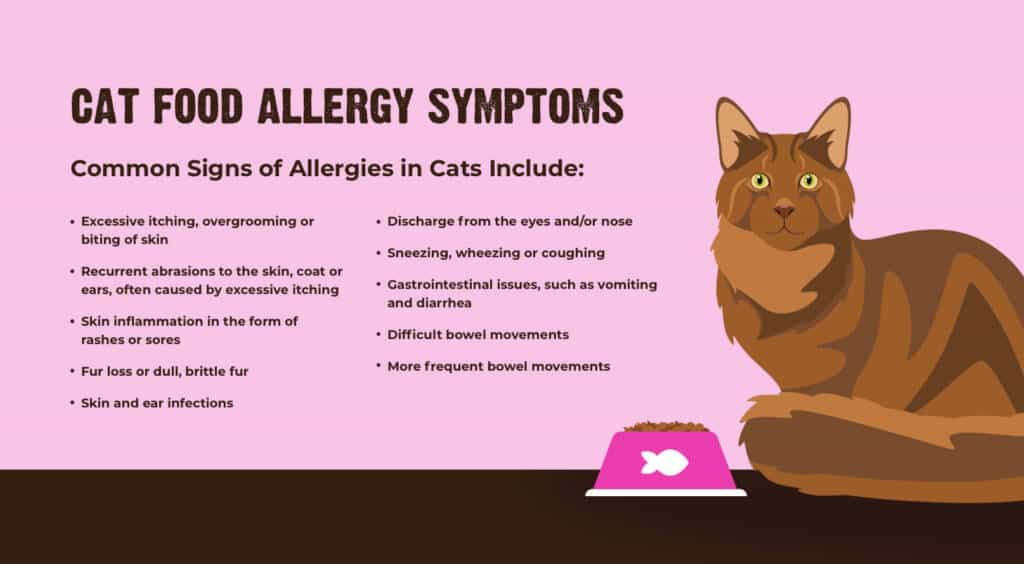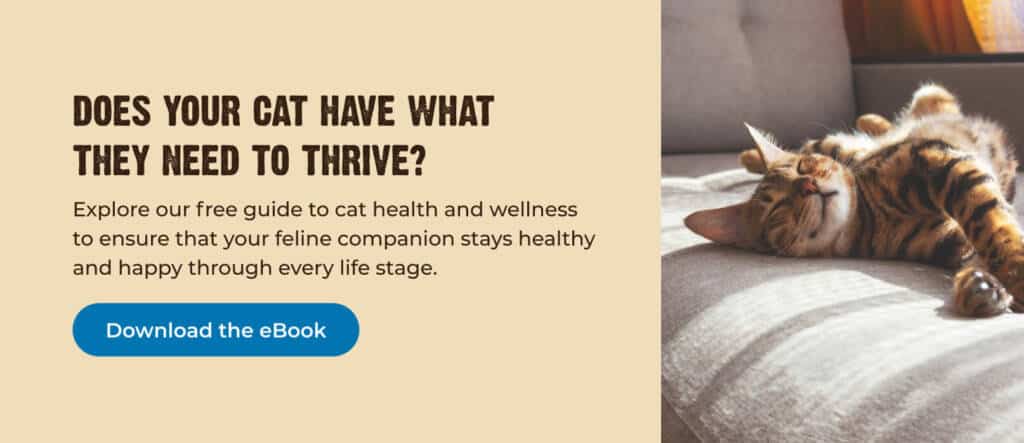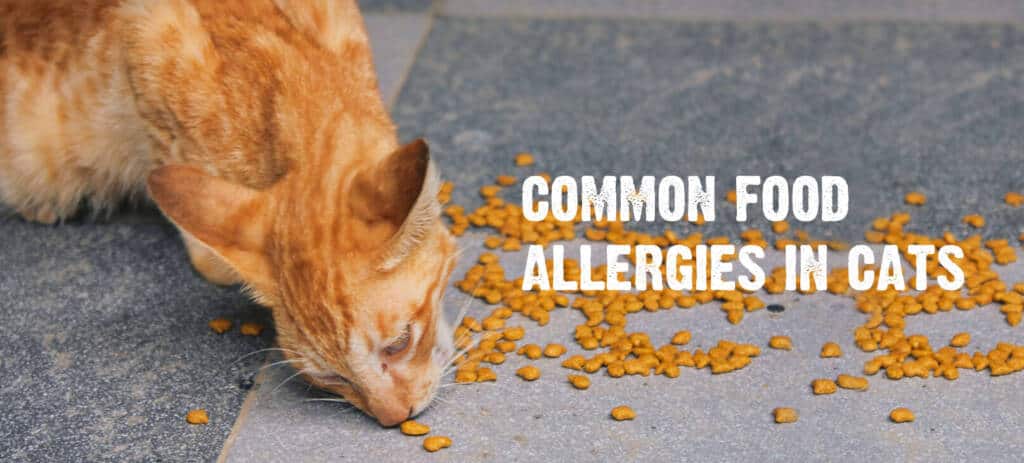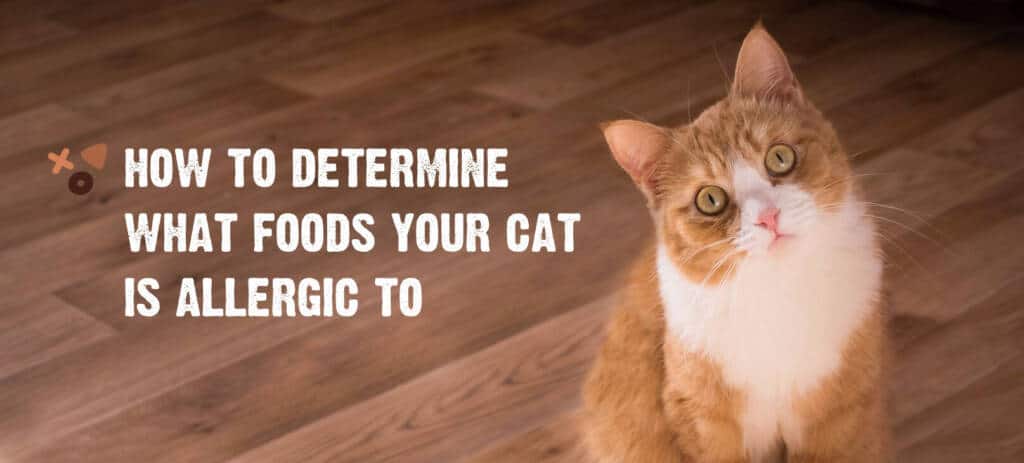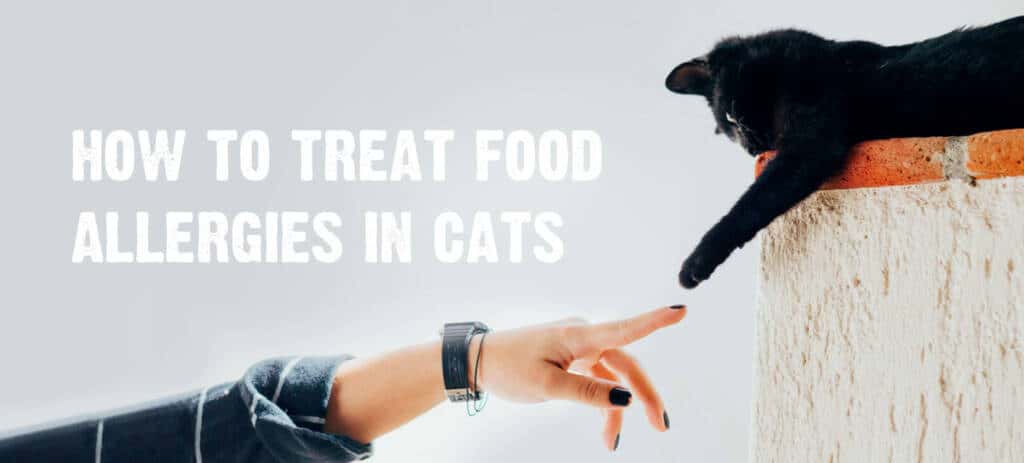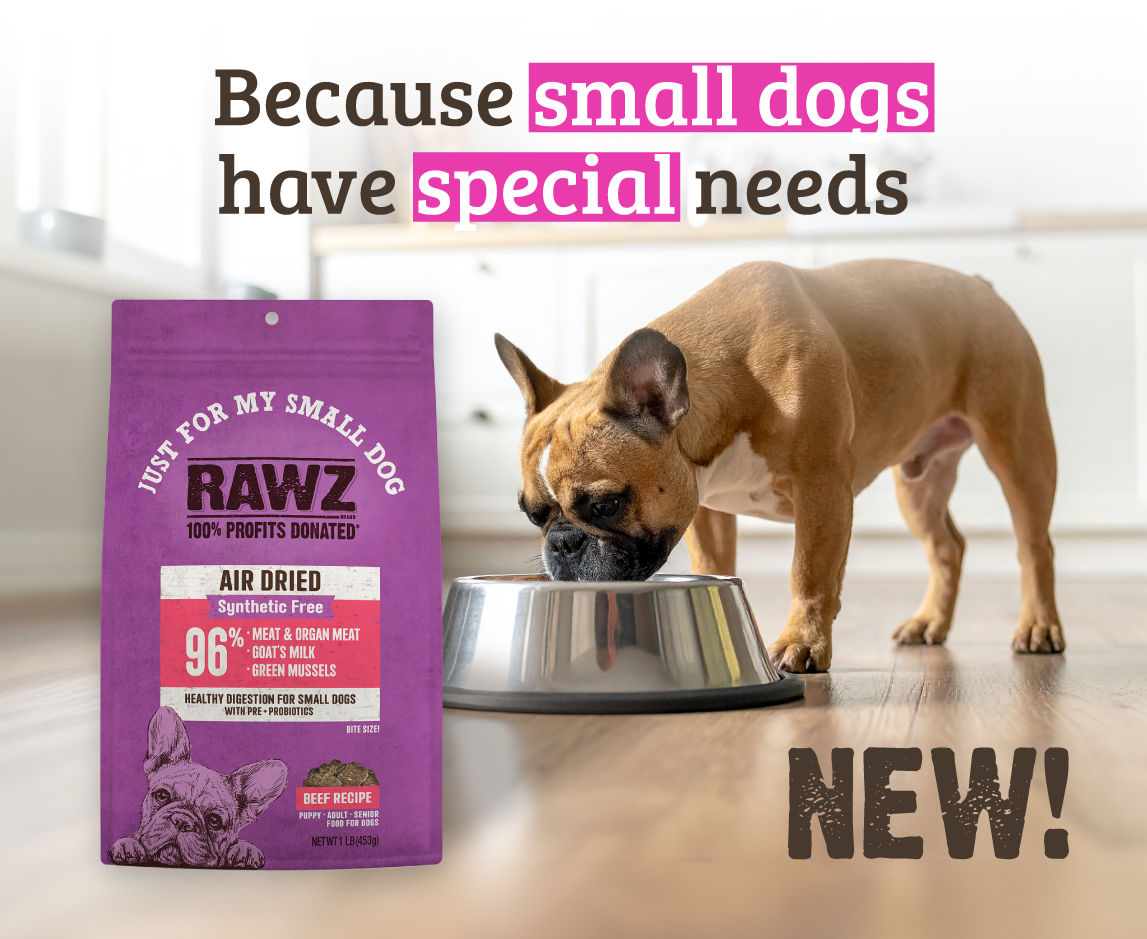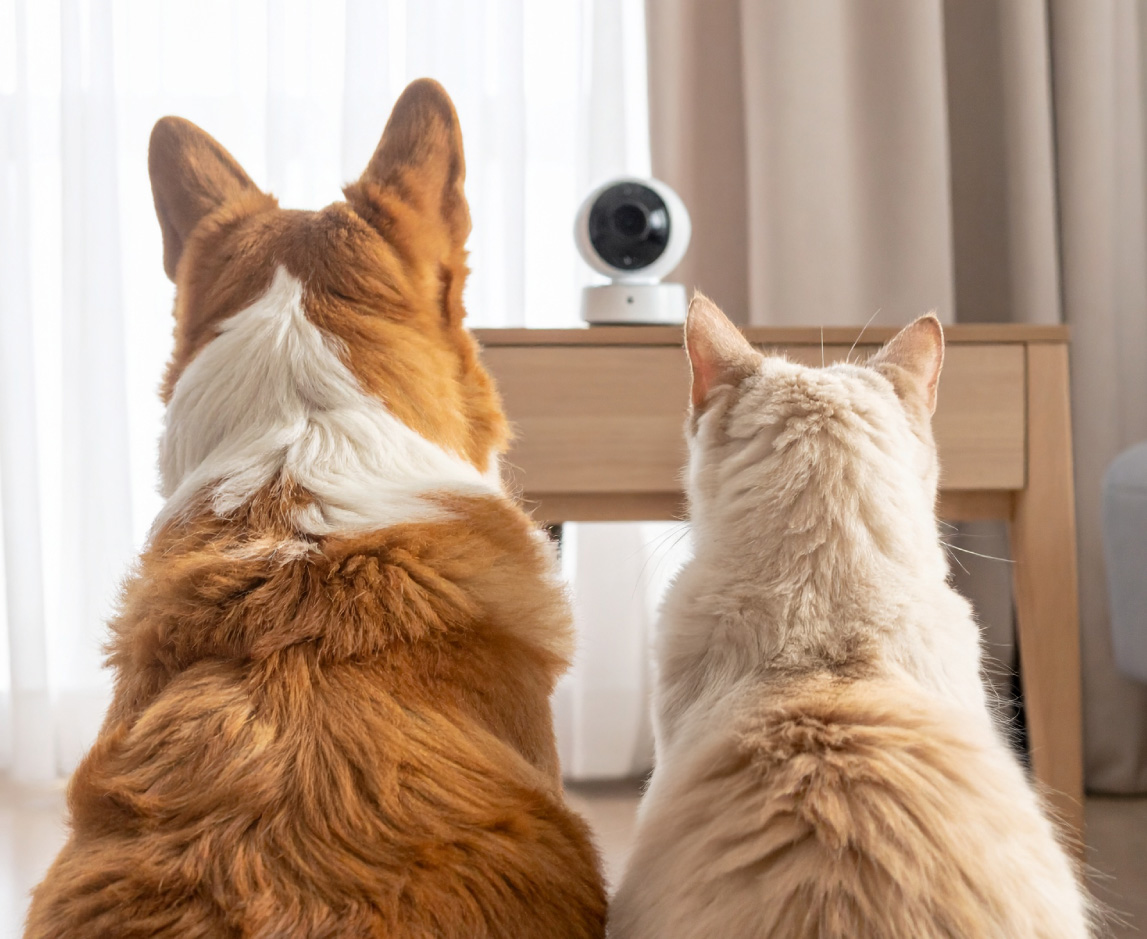As pet parents, providing our four-legged friends with the best quality of life possible is a top priority — and for cat owners, that requires feeding them a nutritious diet and recognizing potential food allergy symptoms. In this article, we’ll discuss signs of food allergies in cats, common allergens and how to treat a food allergy in your cat so that they can stay happy and healthy.
Can Cats Have Allergies?
Just like humans, cats can absolutely have food allergies. An allergic reaction is an immune system response to a foreign substance, known as an allergen. Though food allergies in cats can manifest in a number of ways, some of the most common symptoms include excessive itching, skin inflammation, vomiting and diarrhea.
It’s important when discussing food allergies in cats to clarify the distinction between an allergy and an intolerance (also known as a food sensitivity). Although the symptoms of an allergy and an intolerance can look similar, only an allergy to an offending food item can trigger a response from your cat’s immune system. By comparison, an intolerance can impact bodily functions such as the complete digestion of food and absorption of nutrients, but it does not trigger an immune response.
To learn more about other common health issues cats face — and how to recognize them — we recommend reading our guide on the subject.
10 Symptoms of Food Allergies in Cats
Food allergies in cats can present in a number of ways. Common symptoms of food allergies in cats can include:
- Excessive itching, overgrooming or biting of skin
- Recurrent abrasions to the skin, coat or ears, often caused by excessive itching
- Skin inflammation in the form of rashes or sores
- Fur loss or dull, brittle fur
- Discharge from the eyes and/or nose
- Skin and ear infections
- Sneezing, wheezing or coughing
- Gastrointestinal issues, such as vomiting and diarrhea
- Difficult bowel movements
- More frequent bowel movements (often accompanied by rectal irritation, displayed by the animal scooting, or dragging its hindquarters on the ground/floor)
Certain symptoms, if left untreated, can lead to secondary infections and long-term conditions, so it’s important to identify potential allergens as soon as symptoms occur.
Although vomiting can be a sign of food allergies in cats, it could also point to other potential health issues. This blog post identifies common causes of vomiting in cats and offer advice on how to prevent it.
Common Causes of Food Allergies in Cats
Animal protein is the most common culprit of food allergies in cats. According to a 2016 study published by BMC Veterinary Research, the most common food allergens for cats are beef, fish and chicken, which are three of the most widely used proteins in cat food in cat food on the market today. Though less common, allergies to lamb, rabbit, egg, dairy, wheat, barley or corn can also occur. An imbalance of gut bacteria can cause a poor immune response to foods hence causing allergic reaction or inflammation.
As a general reminder, there are certain foods your cat should never eat, such as garlic, chocolate and grapes. For a full list of foods that are toxic to cats — and what to do if your cat consumes something toxic — check out this blog post.
How to Determine What Foods Your Cat Is Allergic to
Although there are many tests on the market that purportedly diagnose food allergies in cats, studies show that these tests are often inconclusive and inaccurate.
The most effective and reliable way of diagnosing a food allergy in your cat is to conduct an elimination diet, also known as a food trial. This type of diet aims to pinpoint potential allergens by removing an ingredient — typically a protein or a fiber — from your cat’s diet for at least one week and closely monitoring their symptoms. In addition to allergens, elimination diets can also be used to identify food sensitivities in cats.
With this approach, it’s important to eliminate each ingredient not only from your cat’s food, but also from any treats or supplements you give them. Food trials require patience, as they can take weeks — even months — to complete. To ensure best results, consult your veterinarian before placing your cat on an elimination diet. It is also important to understand many of these symptoms can be caused by environmental allergies – if food elimination has not helped relieve symptoms pet parents should be looking at identifying and removing the environmental triggers.
How to Treat Food Allergies in Cats
Once you’ve determined what it is your cat is allergic to, the next step is to treat it. It’s important to note here that a true food allergy cannot be cured, only treated; however, you can ensure that your cat is happy and safe by avoiding allergens. Your veterinarian can help you do so by putting your cat on a special diet, such as a novel protein diet or a hydrolyzed diet.
For cats that are allergic to specific proteins, a novel protein diet replaces those proteins with other, less familiar forms of protein. So, for example, if your cat were allergic to chicken, turkey or beef, you might substitute those proteins with venison, salmon or trout. Since these proteins are less common in cat food, it’s less likely that your cat will be allergic to them or that they will trigger a reaction.
A hydrolyzed diet is another common way to treat food allergies in cats. The proteins in hydrolyzed foods have been broken down into smaller pieces — often on a molecular scale — which means any traces of the allergen are less likely to trigger an immune response. While effective, hydrolyzed foods can be expensive because they’re made through a complex process known as enzymatic hydrolysis.
Some cat parents may find it helpful to create their own homemade cat food, as this gives them control over which ingredients they use and helps them avoid potential allergens. If you choose to go this route, be sure to only follow recipes provided by board-certified veterinary nutritionists and work closely with your veterinarian to strike the right balance of essential nutrients.
Should your cat accidentally ingest an allergen and have a reaction, consult your veterinarian immediately. They may recommend a low-dose corticosteroid such as Prednisolone, an antifungal or an antibiotic.
Caring for a cat with a food allergy can sometimes seem intimidating, but it doesn’t have to be. Even a few simple measures such as swapping out one protein for another, closely reading nutrition labels and giving your cat minimally processed food such as RAWZ can help them look and feel their best.
Where Can You Buy RAWZ?
You can find RAWZ’s minimally processed, high protein cat food at your local independent pet supply retailer.


